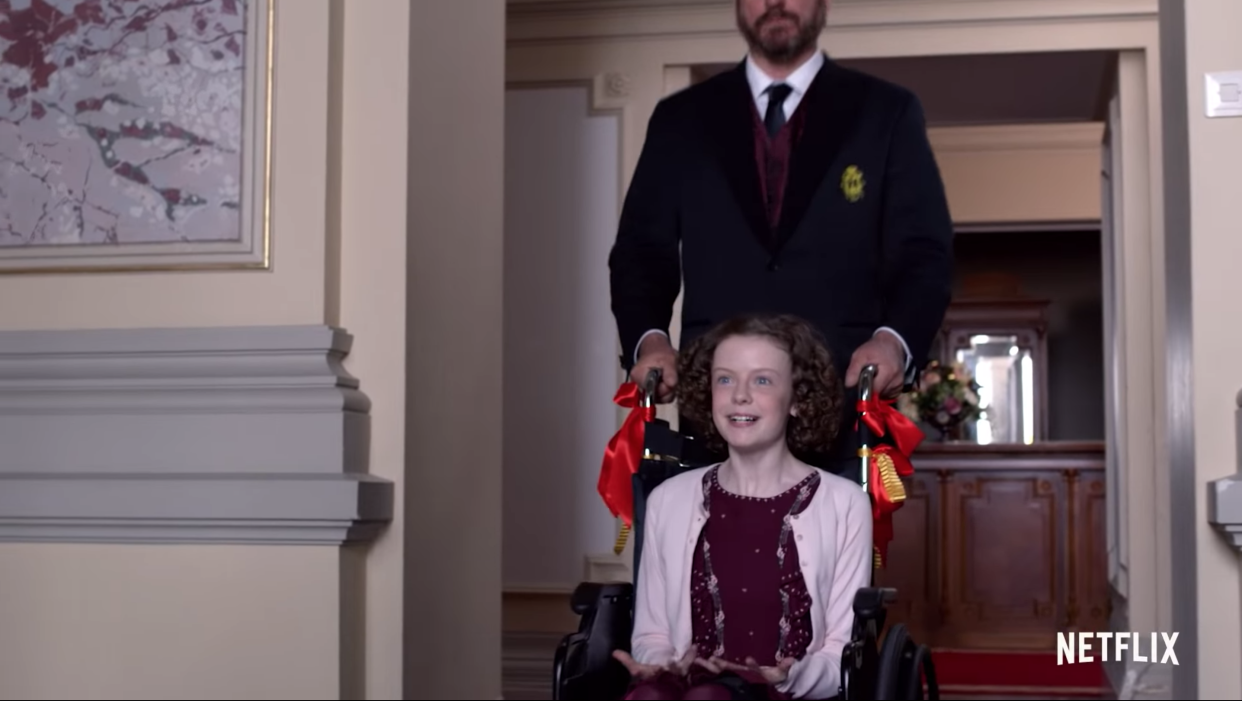Woman living with cerebral palsy says 'awful' wheelchair in Netflix's 'A Christmas Prince' reinforces a lot of stereotypes and stigmas

Princess Emily from the Netflix original movie A Christmas Prince is not your average royal. The daring adolescent, who happens to use a wheelchair, acts in plays, rides toboggans and hacks into the Aldovia government mainframes.
Yet while many have praised Netflix for depicting a strong main character living with a disability, one woman is calling the streaming giant out, saying it completely missed the mark on a crucial aspect of Princess Emily’s character.
Hey @netflix why does Princess Emily have an awful hospital wheelchair that she cannot push on her own? As a character, you’ve got a headstrong girl with a disability. She causes trouble, acts in plays, toboggans, and yet she doesn’t push her wheelchair on her own? Come on now.
— Maria Town (@maria_m_town) December 1, 2018
Maria Town, the director of the Mayor’s Office for People With Disabilities in Houston, took to Twitter to express her dismay that despite the independence of the spunky princess, she is only ever depicted being pushed by someone else in her wheelchair.
“If I were a little girl watching Princess Emily and was thinking about using a chair, I wouldn’t want to,” Town tells Makers. “I wouldn’t want to have someone push me around all day.”
As someone living with cerebral palsy, Town says it’s important for young people living with disabilities to “really see themselves represented and not see their chairs as anything that encumbers what they want to do.”
“It reinforces a lot of stereotypes and stigmas we have with wheelchairs that they are a sign of dependence,” says Town, who has yet to receive a response from Netflix. (Netflix also did not immediately respond to Makers’ request for comment.) “They need to see characters using tools that really empower them and allow them to thrive and to know that their wheelchair is not something to be ashamed of.”
The easiest way to prevent potential mishaps going forward? “If you have a character with a disability in a film, make sure you hire a person with a disability in the room to advise you,” says Town. “Like, come on, how much did you invest in fake snow?”
However, Princess Emily’s character isn’t all bad. According to Town, the disability community appreciates the representation of people living with disabilities as complex characters with varied interests.
“Little girls with disabilities are pressured to be jovial and inspiring like Pollyanna,” says Town. “But kids need to be able to have fun on their own terms, be defiant, discover their own interests and have conflicts with parents and friends.”
However, when Netflix depicts someone wheeling the princess around the castle for her, Town says, it erases any signs of independence.
“It doesn’t fit with her character, and it doesn’t fit with the lived experience of so many people who are chair users,” the 31-year-old says. “You are not an object of pity. You may need help, but you are still in control of what happens to you.”
Other Twitter users pointed out the misguided use of an “inadequate” hospital wheelchair instead of a power wheelchair, which is commonly used by people with long-term ambulatory needs.
If a princess can't afford a powerchair, what hope does anyone else have?
— Fullmetal Feminist (@redskyie) December 1, 2018
Town says Hollywood still has a long way to go to empower young people with disabilities. “They need to see characters using tools that really empower them and allow them to thrive,” says Town. “Their wheelchair is not something to be ashamed of but celebrated as a tool that gives that freedom to access the world around them.”
Read more from Makers:
